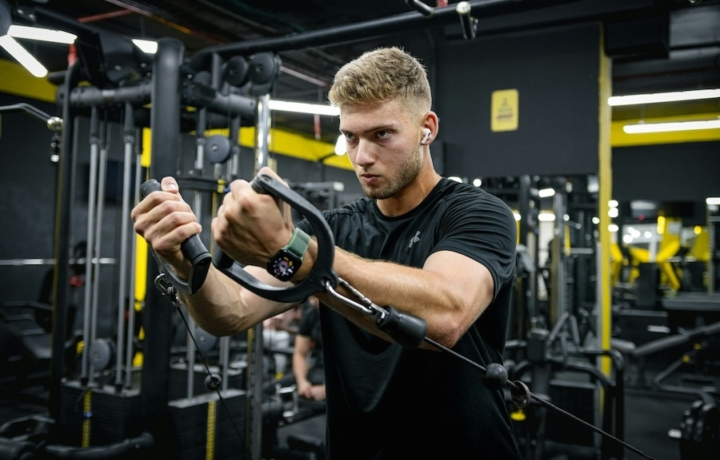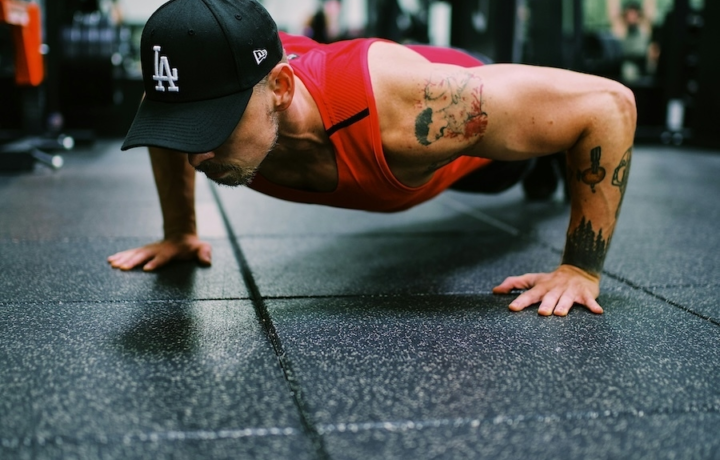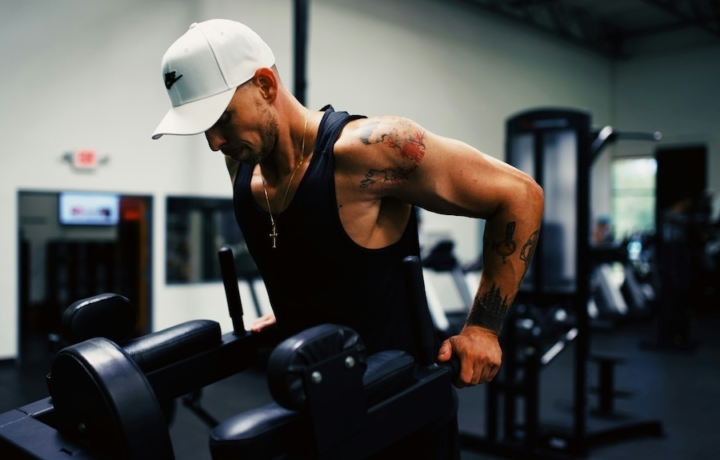Exercise
Dumbbell Fly

Dumbbell Fly
How to Perform
- Lie on a flat bench holding a dumbbell in each hand directly above your chest with palms facing each other and arms fully extended.
- Slightly bend your elbows to establish the position you'll maintain throughout the movement, preventing stress on your elbow joints.
- Inhale as you slowly lower the dumbbells outward in a wide arc until you feel a stretch across your chest, maintaining the slight bend in your elbows.
- Keep your feet flat on the floor and press your lower back into the bench to stabilize your core throughout the movement.
- Ensure your wrists remain neutral (not flexed or extended) and in line with your forearms during the entire exercise.
- Exhale as you contract your chest muscles to bring the dumbbells back up in the same arc motion until they nearly touch above your chest.
- Maintain control during the entire movement, avoiding momentum and keeping tension on your chest muscles.
- Focus on the chest doing the work rather than the arms, thinking of hugging a barrel as you bring the weights together.
Important information
- Avoid lowering the weights too far below chest level, which can strain your shoulder joints; stop when you feel a comfortable stretch in your chest.
- Keep your shoulder blades retracted and pressed into the bench throughout the exercise to protect your shoulders.
- If you experience any shoulder pain, try using lighter weights or switching to a neutral-grip variation with palms facing each other.
- Control the weight at all times – this exercise is about muscle isolation, not how much weight you can move.

Dumbbell Fly
Exercise Details
Primary Muscles
Muscle Groups
Mechanic
Risk Areas
Built for progress
Take the guesswork out of training
Create personalized AI-powered workout plans that evolve with you. Train smarter, track every rep and keep moving forward, one workout at a time.






The dumbbell fly stands as a cornerstone chest isolation movement in bodybuilding and strength training programs for intermediate lifters seeking to sculpt defined pectorals. This elegant exercise targets the pectoral muscles with remarkable precision, allowing for a deep stretch and concentrated contraction that basic pressing movements simply can't replicate.
Unlike compound chest exercises that heavily recruit the triceps and shoulders, the dumbbell fly places primary tension directly on the pecs throughout the entire range of motion. This isolation effect makes it particularly valuable for bodybuilders who need to address muscular symmetry and achieve that coveted chest sweep extending from sternum to armpit.
For intermediate trainees who have established foundational strength, the dumbbell fly serves as an excellent secondary movement after heavier pressing. The exercise excels at creating metabolic stress and mechanical tension—two crucial factors for hypertrophy—without the joint stress associated with maximum loads. This makes it sustainable for long-term strength development while still delivering substantial muscle-building stimulus.
From a strength perspective, the dumbbell fly helps develop stabilizing muscles throughout the chest, shoulders, and core that contribute to overall pressing power. Strong, well-developed pectoral muscles built through flies can translate to improved performance on bench press variations once you return to those heavier compound movements.
Many bodybuilding legends have relied on dumbbell flies to create that dramatic chest development seen on competition stages. The exercise creates that distinctive line separating the upper and lower pectoral regions while enhancing the overall chest thickness that's immediately noticeable in both athletic and aesthetic contexts.
For optimal results, intermediate lifters should integrate dumbbell flies strategically within their training split, typically performing them after heavier pressing work when the pectorals are sufficiently warmed up but not fully fatigued. This approach maximizes both safety and muscle fiber recruitment for consistent chest development over time.
FAQ - Dumbbell Fly
Dumbbell flies primarily isolate the pectoral muscles (chest), with particular emphasis on the sternal (mid) and clavicular (upper) regions. Unlike compound pressing movements, flies minimize triceps and front deltoid involvement, creating more focused tension across the entire pectoral region.
Lie on a flat bench holding dumbbells above your chest with slightly bent elbows, then lower the weights in a wide arc until you feel a stretch in your chest. Maintain the same elbow angle throughout the movement, and focus on squeezing your pecs as you bring the weights back up in the same arc path.
Use moderate weights that allow you to maintain proper form and feel the stretch in your chest—typically 50-60% of what you'd use for dumbbell bench press. The dumbbell fly is an isolation exercise where technique and muscle connection matter more than load for optimal chest development.
Perform dumbbell flies after your heavy compound pressing movements like bench press or push-ups when your chest is warmed up but not fully fatigued. This strategy maximizes muscle fiber recruitment while minimizing injury risk, typically using 3-4 sets of 10-15 reps.
The most common mistakes include using weights that are too heavy, fully straightening the elbows (which stresses shoulder joints), and reducing the range of motion. Also avoid dropping the weights too low past your shoulder line, as this can place excessive strain on the shoulder capsule.








